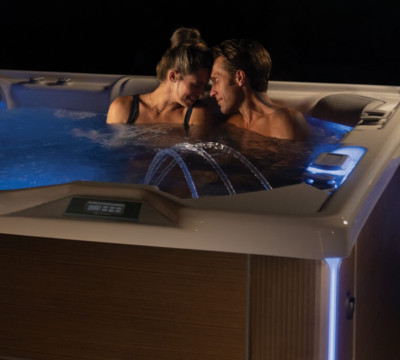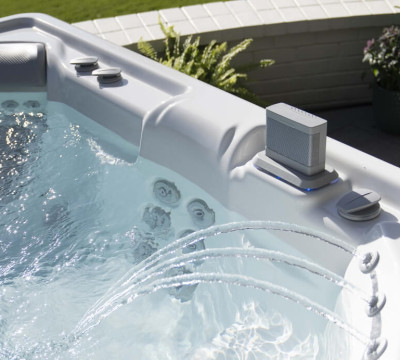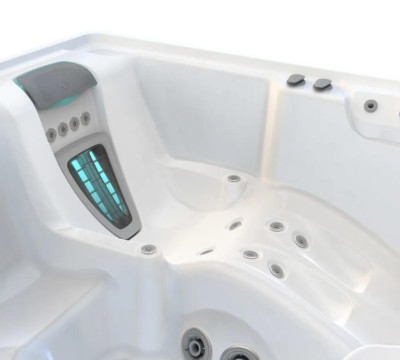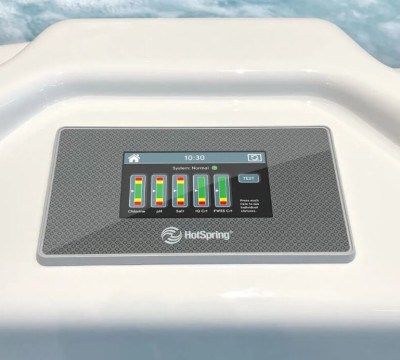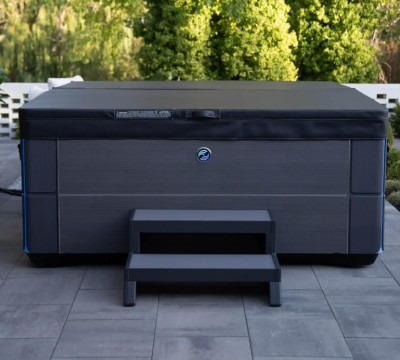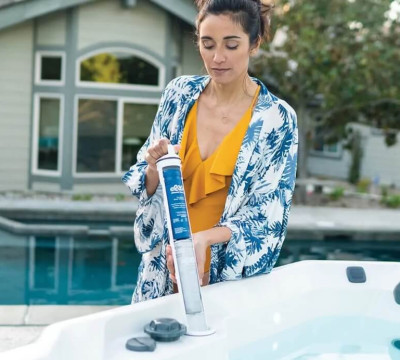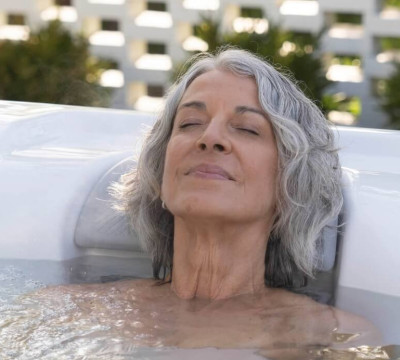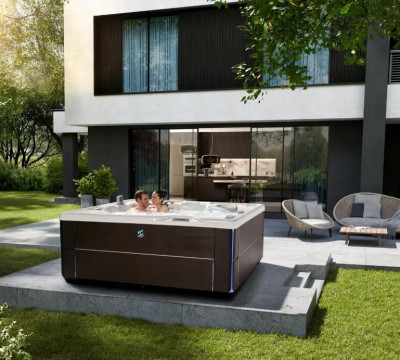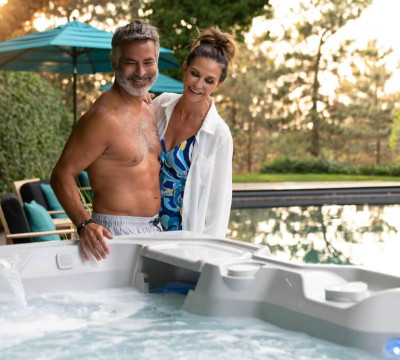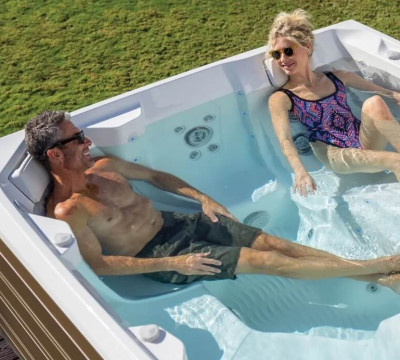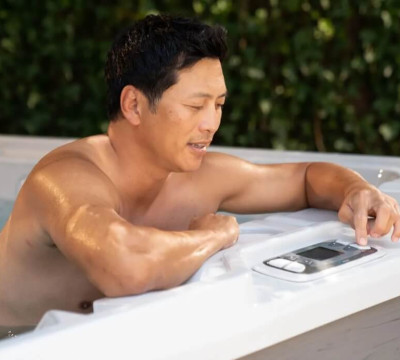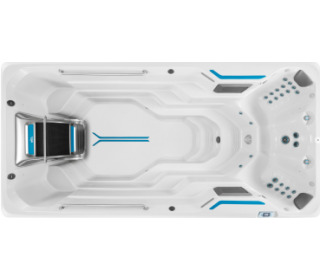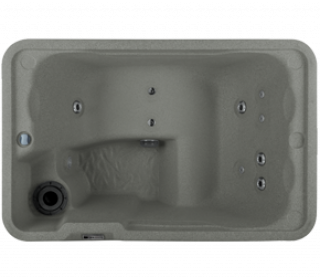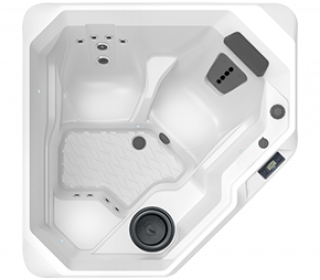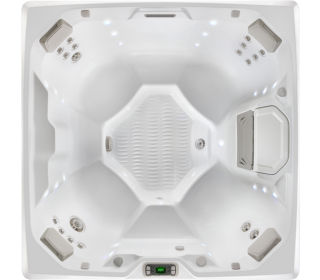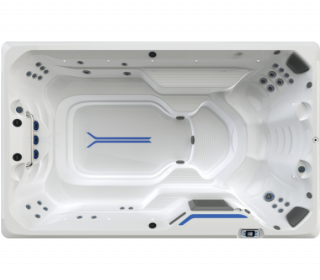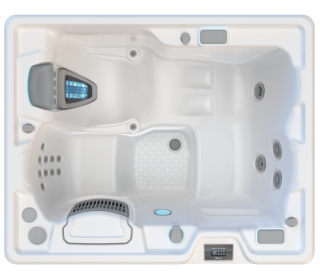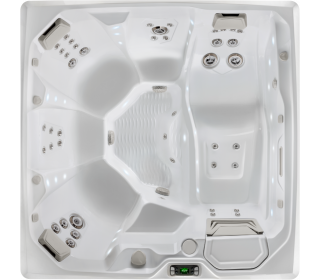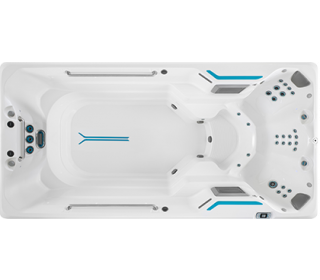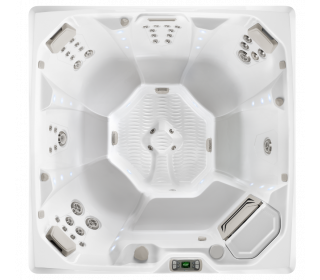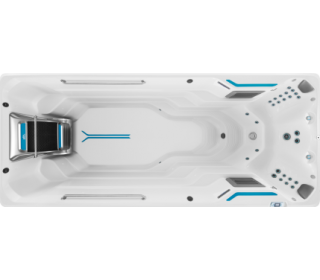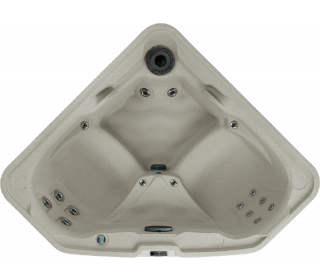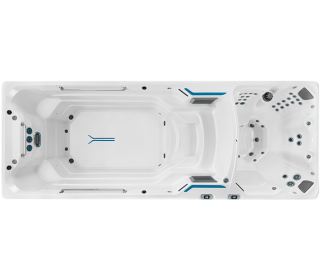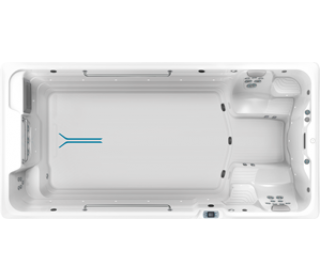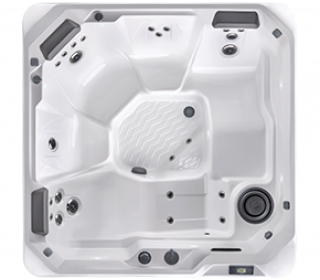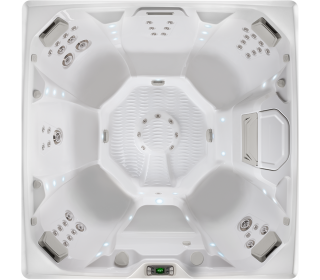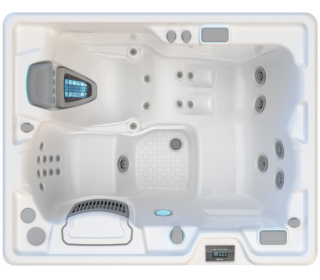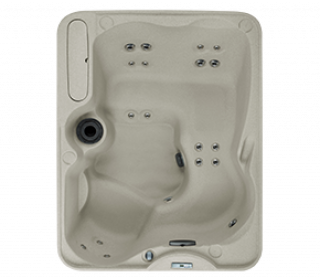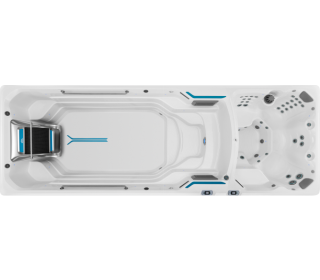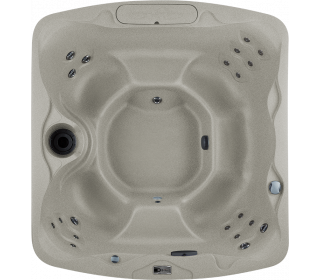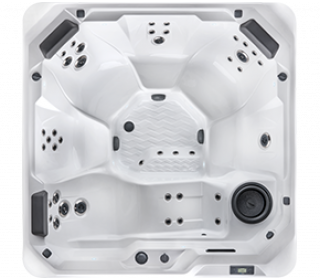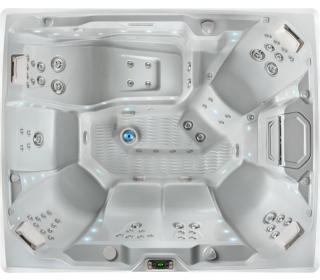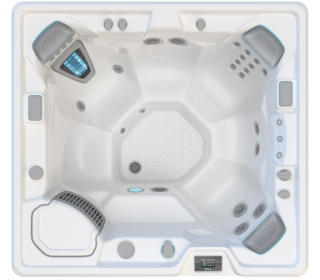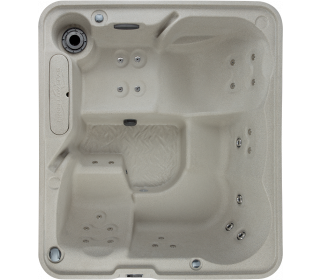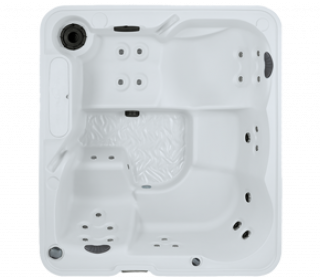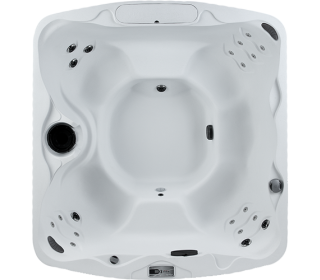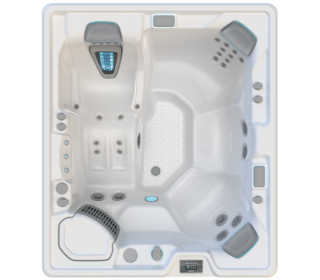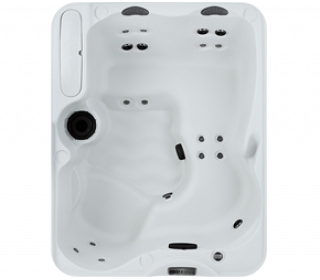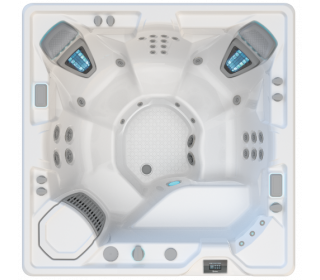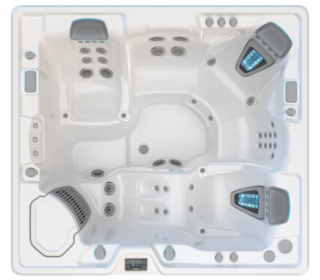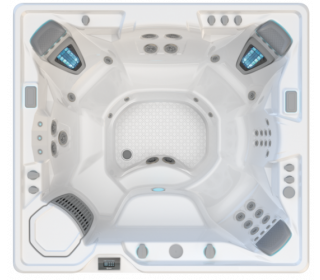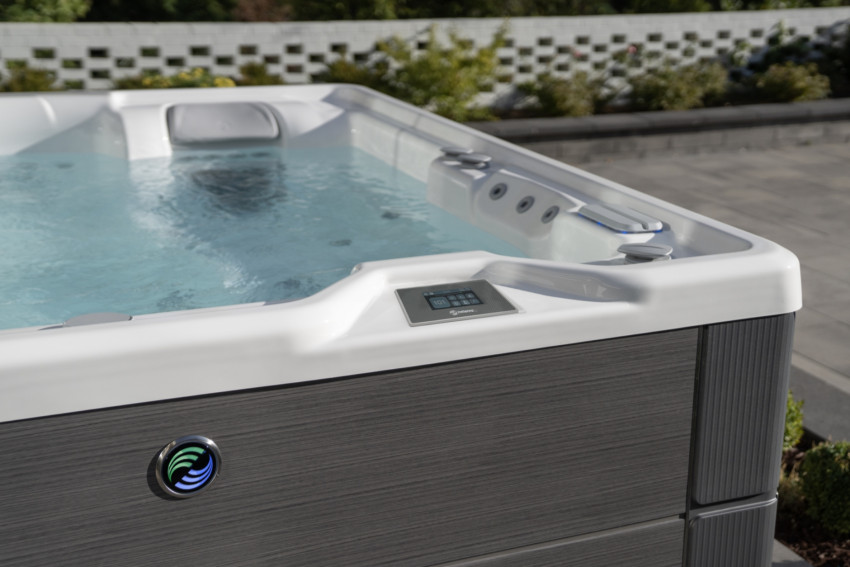We tend to take our spines for granted… until something goes wrong. When it strikes, back pain is perhaps the most debilitating form of chronic pain. Estimates from the Australian Institute of Health and Welfare suggest approximately four million Australians (16% of the population) have back problems. And one of the most serious and all too common conditions is a herniated disc.
There may be a novel and rather luxurious fix for the discomfort created by a herniated disc: a soak in a spa pool. Multiple studies have shown that immersing yourself in warm water can form an effective pain management strategy for back pain sufferers, due to its analgesic effects.
The short-term relief offered by the warm and bubbling waters of a spa pool can be game-changing for herniated disc sufferers. But how exactly do spa pools ease pain? And how can you get the greatest level of relief? In this article we’ll answer all that and more.

What is a herniated disc?
Between each of the bony vertebrae in your spine sits a rubbery disc. These discs feature a soft centre called the nucleus, wrapped in a tougher exterior called the annulus.
A herniated disc occurs when the nucleus pushes out through a tear in the annulus. This is most often caused by general wear, tear and deterioration; a consequence of age and luck. Most people are unable to pinpoint the moment the herniation occurred, and often there are no symptoms at all.
When there are symptoms, they can include:
- Back and neck pain: Herniated discs most commonly occur in the lower back and neck.
- Arm and leg pain: If the herniated disc presses on a nerve it can result in sharp pain around the body. Herniated neck discs can result in shooting pains in shoulders and arms, while herniated discs in the lower back can cause pain in the legs and buttocks.
- Numbness and weakness: In cases where the nerves are affected, the same areas of the body affected by pain can also be prone to tingling and numbness, and can feel weaker than normal.
These symptoms usually occur on one side of the body.
What helps herniated discs heal faster?
There are two cures for a herniated disc:
- Rest: The most common treatment is simply resting and allowing the disc to heal itself. In most cases the annulus will eventually heal over the protruding nucleus, but this can only occur if you avoid straining the affected area.
- Surgery: Going under the knife is a last resort in most herniated disc cases. Surgeons will usually aim to simply cut off the protruding part of the disc, but in the most severe cases they may remove the disc entirely and fuse the vertebrae that sit either side.
If you’re advised by a doctor to simply rest and allow the disc to heal itself, your focus will turn to pain management. A number of medications are often prescribed, including pain relief, muscle relaxants and neuropathic drugs.
Physical therapies can also help manage symptoms during the healing process, from exercises to hot/cold therapies. And it’s here that a spa pool or swim spa can prove valuable.
Does a hot tub help a herniated disc?
The short answer: yes, a hot tub or swim spa can offer an effective way to manage the symptoms relating to a herniated disc. Here’s how.
When you submerge your body in warm water, a physiological response is triggered. Blood vessels widen, which helps to deliver more oxygen and nutrients to the organs and soft tissues than need them. The result is both a healing and an analgesic effect, with the pain relief potentially lasting far longer than the soak:
- According to this meta-analysis of randomised trials, “there is encouraging evidence suggesting that spa therapy and balneotherapy may be effective for treating patients with low back pain.”
- This study found that a combination of warm water immersion (balneotherapy) and physical therapy improved the quality of life and flexibility of patients with chronic low back pain to a greater degree than physical therapy alone.
- This study stated that there was “significant perceived improvement from back pain after utilisation of spa water.”
Because a soak in a spa pool can lead sufferers of chronic pain to feel less discomfort, it also allows them to move more freely. The buoyancy of the water also helps: unlike dry exercise, which forces the body to fight against gravity, there are no jarring movements in aquacise, which has been shown to offer relief from chronic pain.
These exercises can be as simple as moving the areas of the body affected by the herniated disc, or doing a more comprehensive, full-body workout like swimming. Speaking of which…
Is swimming good for herniated discs?
Let’s take a closer look at the role of swimming in herniated disc recovery. While rest is key, particularly in the early stages of herniated disc recovery, it’s also important for a patient to remain active, to help the body heal and to regain strength in the affected areas. When done in the right way, swimming with a herniated disc can be both a comfortable and a very helpful form of therapy, particularly when you have access to the right tools.
A swim spa can offer the ideal form of exercise for back pain sufferers, with hydrotherapy and aquacise offering a low impact yet highly effective form of physical therapy. What’s more, the improved level of fitness that this exercise produces can see you enjoying health and wellness benefits that extend far beyond the relief of back pain.
A Fastlane Pool is ideal for those who suffer from back pain, because you never reach the end – this is a tumble-turn-free zone. Instead, the steady and fully adjustable current creates a swim-in-place experience that has to be felt to be believed – if you close your eyes there’s no real way to know that you’re not swimming in open water!
Which is the best swimming stroke for herniated disc? Generally speaking the gentler the better. Breaststroke is advisable, particularly in the earlier stages of recovery, while freestyle and backstroke can be employed once a patient begins to heal and regain strength.
Can heat make a herniated disc worse?
The answer to this question depends on how you choose to define ‘heat’.
If we’re talking about ambient air temperature, then yes, this study found that “high or low ambient temperature can increase the hospitalisation risk of lumbar disc herniation”. If you live in a particularly hot area, you may be more at risk.
If we’re talking about applying heat to the affected area, then it’s quite the opposite – hot/cold therapies have been shown to form an effective treatment for herniated discs. As we covered in the previous section, heat promotes blood flow while loosening the muscle tightness that so often occurs alongside instances of back pain. This form of heat won’t make your herniated disc worse at all – it will help to make it better.
If you’re one of the many Aussies who suffer from herniated discs, or indeed any form of chronic back pain, a Hot Spring spa pool or Fastlane Pools swim spa can offer real, proven relief.
What’s more, you’ll be able to enjoy all the other perks that come with spa ownership: the fun, the relaxation, and the quality time that you can enjoy with your loved ones.


